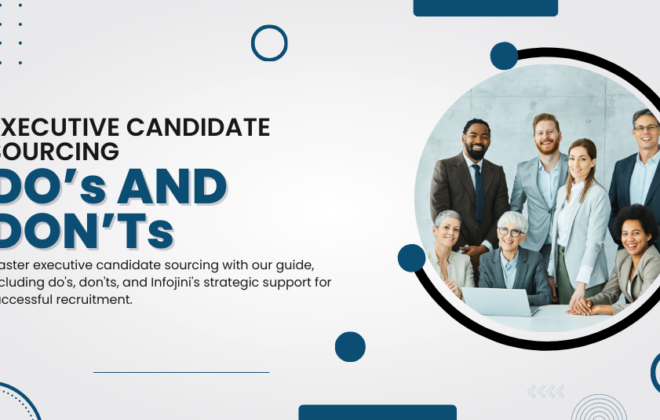How Total Talent Management Can Impart Agility & Scalability to Your Firm?
As technology transforms the way we work and the need for global talent arises, the traditional talent acquisition practice of finding a long-term permanent hire based on budget and location constraints doesn’t work anymore. Employers need to find quick and cost-effective talent if they want to fulfill the scalable framework and being rigid about the type of talent they want is a strict no-no.
The present static talent pools are not suffice to meet the ever-growing demands that tech transformation has produced and utilizing the right workforce mix of temps, permanent hires, contractors, and SOWs makes perfect sense. But before your organization decides to step on the TTM bandwagon it needs to get its team in place, ensure effective collaboration between departments, and update its tech stack.
- Align HR & Procurement: Align these two departments towards the overall business goals
- Implement Data-based HR Tech Strategy: Ensure that data from different sources can be analyzed to produce workforce planning insights
- Change Management Plan: Implement a long-term change management plan that involves new roles, innovative sourcing practices, and stakeholders with open-frame of mind
- Form the Right Team: Get together a team of passionate individuals to oversee the transformation
Compare Your Current & Future State: The 3-Step Process
![]()
So, if adopting TTM is such a viable proposition, why do we see so many organizations struggling with the implementation? Because organizations forget that adopting total talent management is not a practice, it’s a journey that requires you compare the current and future state, get the right advisory, and fix gaps in talent acquisition. Before you embark on this journey, these are some of the steps you need to take care of.
1) Zero-in on the Right Workforce Mix Using Expert Advisory
The first and foremost step is to determine the right workforce mix that your organization would require in the coming months. The chosen mix of permanent, contingent, and temps should ensure timely project delivery, effective cost reduction, and also maintain impeccable quality. If you have someone who has experience in handling both contingent and permanent talent, as well as years of experience in charting workforce planning trees then you have the first step sorted. Else, we would advise you to take the help of a TTM professional who has experience in implementing such strategies. You need to ask yourself these questions before you begin the transformation process:
- Whether you need long-term or short-term talent
- Skill-set in question is niche or generic
- Project is strategic or tactical
- Will the current pool be enough to meet these requirements?
2) SWOT Analysis to Fix Gaps in Talent Acquisition
![]()
The next step is to do complete SWOT analysis of what has and hasn’t worked for your organization. Starting from identifying talent needs, deploying talent, to predicting future needs, you need to identify gaps in your talent acquisition strategy (sourcing practices, hiring data analysis, etc.).
- Study the project completion metrics (time-to-hire, cost-to-hire, assignment completion, etc.)
- Has your talent pool delivered on-time talent?
- Is your sourcing strategy equipped for niche talent?
- Study the past escalations reports
- How many times have you sought the help of subcontractors and in which cases?
- Which sourcing channels and historically worked for you and which haven’t delivered the results?
3) Analysis of Current Tech-Stack
After you have the right advisory in place and have identified the gaps in talent acquisition, it’s time to ask yourself whether your tech stack gives you complete visibility into your HR and recruitment data. Are your ATS, CRM, VMS, and external sourcing tools linked in a centralized framework? Do you have access to hiring metrics throughout the entire recruitment cycle? Do you have the talent to comprehend the available data to produce relevant workforce planning insights (top sourcing channels, top-performing email campaigns, best job advertisements, and more)?
How Total Talent Management Can Impart Agility and Scalability?
![]()
Once the organization has got its specifics right and developed a long-term plan, it’s time to understand how TTM can actually impart your organization agility and scalability.
- Utilize Analytics to Establish Alternative Work Arrangements: Many times candidates can’t be found in your expected timeframe, poached by rival organizations, or leave unexpectedly. These situations can put your firm in a state of fix. If you have interconnected tech stack in place then you know exactly how many contingent workers are available offsite and how many permanent workers are in the pipeline. You would also know which sourcing channels have the best probability of producing qualified candidates for this particular role. The hiring manager can then decide to divert most of the recruitment team on a particular channel, decide to source temp talent from another location where the talent is readily available, or may even decide to hire permanent talent for this position.
- Deploy Qualified Talent Quickly: Till the time you get a permanent hire for a critical position, you can fill the position with temp talent to maintain business continuity. It’s a good practice to establish the roles and positions that could be filled with temp talent, this enables the recruitment team to start preparing a robust pipeline using external and internal sourcing channels. So whenever an urgent requirement comes, instead of searching for a permanent hire which can take considerable time, the hiring manager can utilize temp talent from the already available pool.
- Better Workforce Planning for Scalability and Cost-Effectiveness: Organizations with sophisticated talent analytics have better visibility into their future requirements. They are in a much better position to compare their current pool with the predicted future requirements. These organizations are not only better placed to define the appropriate talent mix but can focus their recruitment efforts in a much cost-effective way. Some of the areas in which they can decrease the overall cost include choosing the right mix of talent, best sourcing channels to run paid campaigns, meet-ups to collaborate with, etc.
While everyone knows about the benefits of adopting the TTM approach, the lack of a proper plan, in-effective collaboration between stakeholders, and outdated tech stack can hamper your efforts. So make sure you have the right team in place to achieve this transformation. Remember, this is a long-term process which would go through its series of hit and trials, so stay put.
Tags In
Related Posts
Subscribe For Updates
Categories
- Accountant
- AI
- Automation
- Awards and Recognitions
- Blue Collar Staffing
- Burnouts
- Campus Recruiting
- Cloud
- Co-Ops agreements
- Company Culture
- Compliance
- contingent workforce
- Contingent Workforce
- COVID-19
- Cyber Security Staffing
- Data Strategy
- Digital Transformation
- direct sourcing
- Distributed Workforce
- Diversity
- Diversity & Inclusion
- Economy
- Events & Conferences
- fleet industry
- Gig Economy
- Girls in Tech
- Global Talent Research and Staffing
- Government
- Healthcare
- Healthcare Staffing
- Hiring Process
- Hiring Trends
- Home Helathcare
- HR
- HR Practices
- HR Tech
- IT
- Labor Shortages
- Life Science
- Local Governments
- News
- Nursing
- Payroll Staffing
- Public Sectors
- Recruiting
- Remote Work
- Skill Gap
- SMB Hiring
- Snowflake
- Staffing
- Staffing Augmentation
- Staffing Challenges
- Talent ROI
- Tech Staffing
- Technology
- Tips & tricks
- Total Talent Management
- UI/UX Design
- Uncategorized
- Veteran Staffing
- Veterans Hiring
- Veterans Hiring
- Workforce Management
Recent Posts
- Automation in Recruiting: From Chatbots to Predictive Screening
- Gig Economy Expansion: The Impact on Talent Pools and Business Models
- Skills-Based Hiring: Why Credentials Alone Don’t Cut It in 2025
- Procurement 3.0: AI & Intelligent Automation in 2025
- Q3 Is Here: Is Your Contingent Workforce Strategy Falling Behind?
Newsletter
Archive
- September 2025
- August 2025
- June 2025
- April 2025
- March 2025
- December 2024
- November 2024
- October 2024
- September 2024
- August 2024
- July 2024
- June 2024
- May 2024
- April 2024
- March 2024
- February 2024
- January 2024
- December 2023
- November 2023
- October 2023
- September 2023
- August 2023
- July 2023
- June 2023
- May 2023
- April 2023
- March 2023
- February 2023
- December 2022
- November 2022
- October 2022
- September 2022
- August 2022
- July 2022
- June 2022
- November 2021
- October 2021
- September 2021
- August 2021
- July 2021
- June 2021
- May 2021
- April 2021
- March 2021
- February 2021
- January 2021
- December 2020
- November 2020
- October 2020
- September 2020
- August 2020
- July 2020
- June 2020
- May 2020
- April 2020
- March 2020
- February 2020
- January 2020
- December 2019
- November 2019
- October 2019
- September 2019
- August 2019
- July 2019
- June 2019
- May 2019
- January 2019
- December 2018
- November 2018
- October 2018
- September 2018
- August 2018
- July 2018
- June 2018
- May 2018
- April 2018
- March 2018
- February 2018
- January 2018
- December 2017
- November 2017
- October 2017
- September 2017
- August 2017
- July 2017
- June 2017
- May 2017
- November 2016
- October 2016




